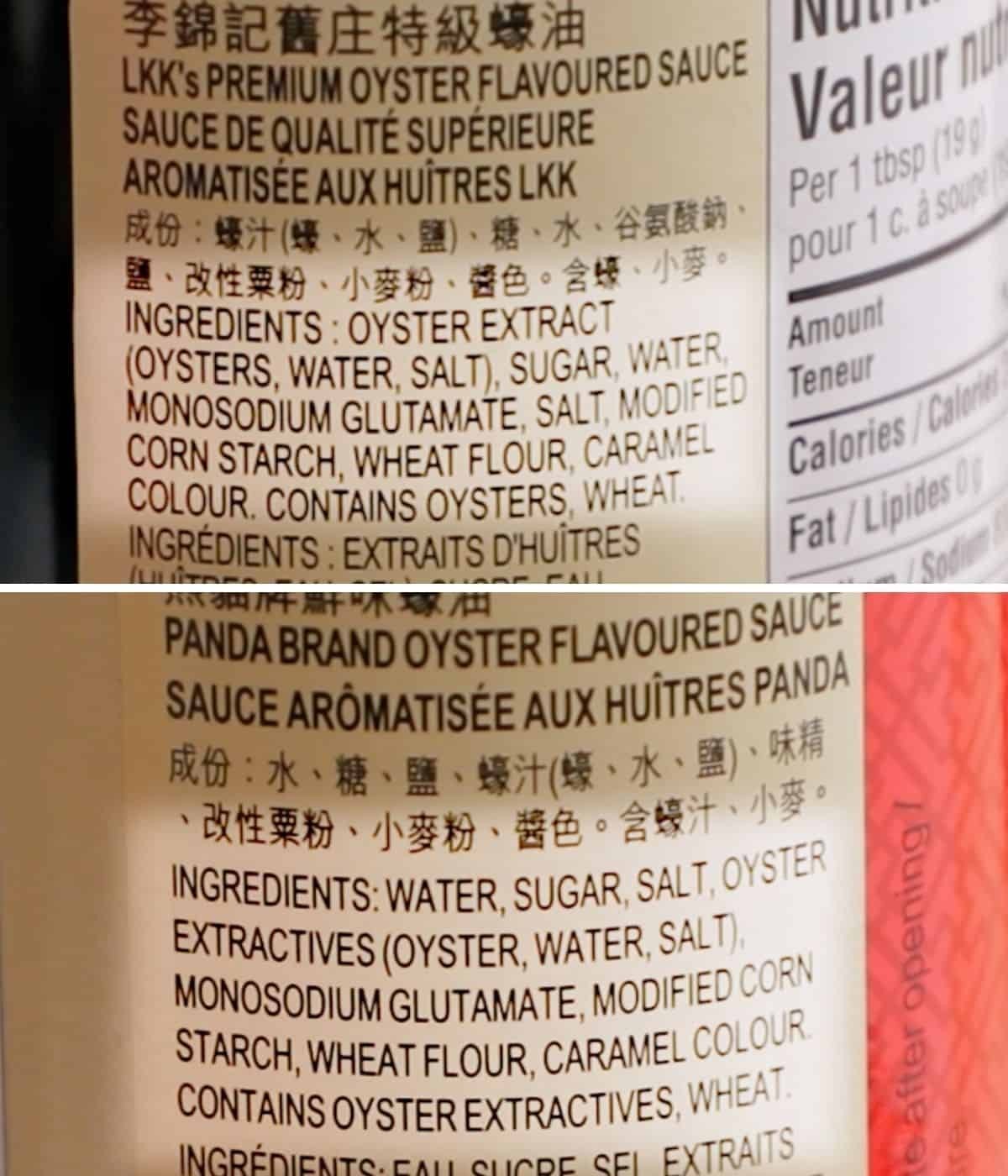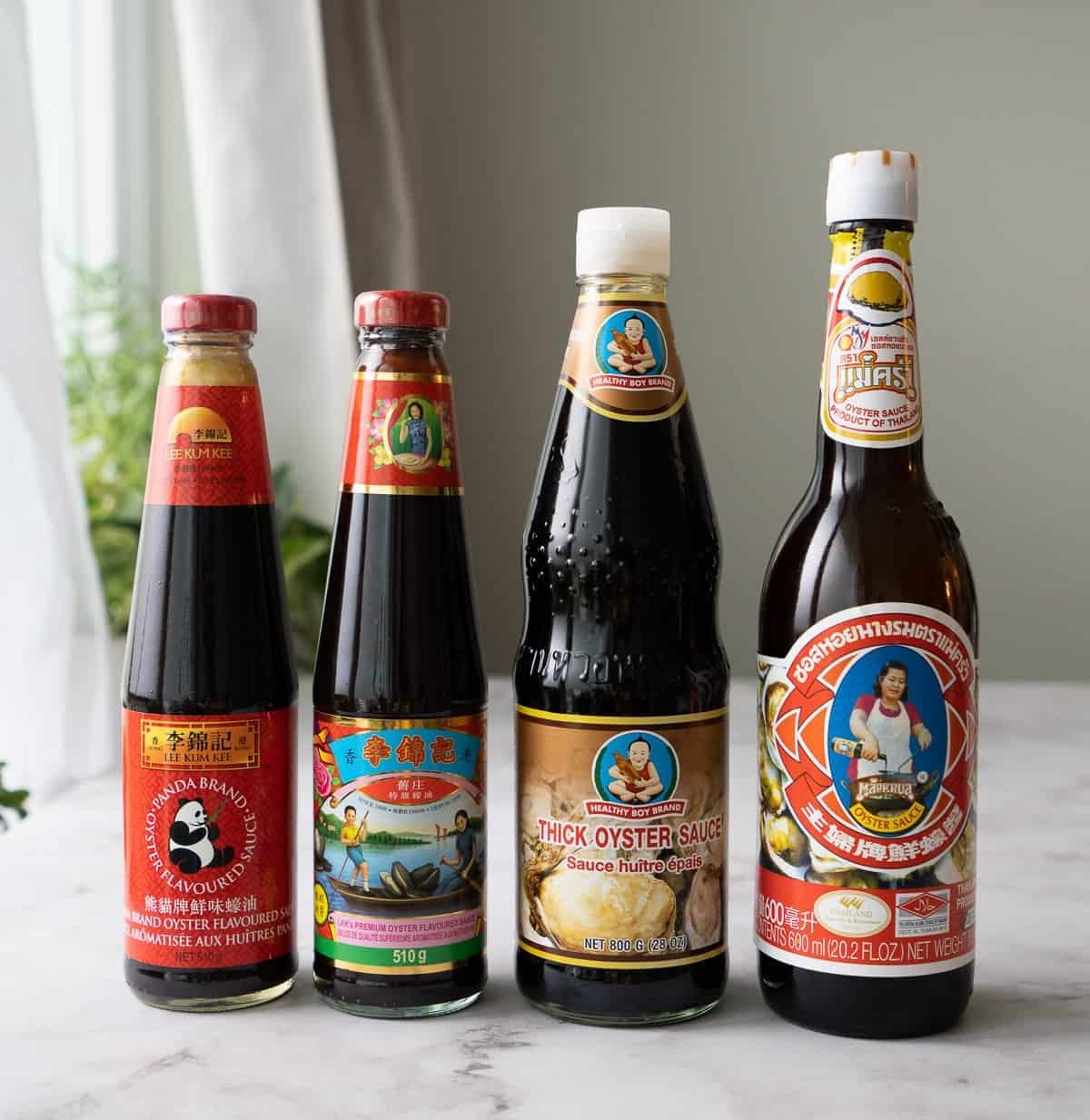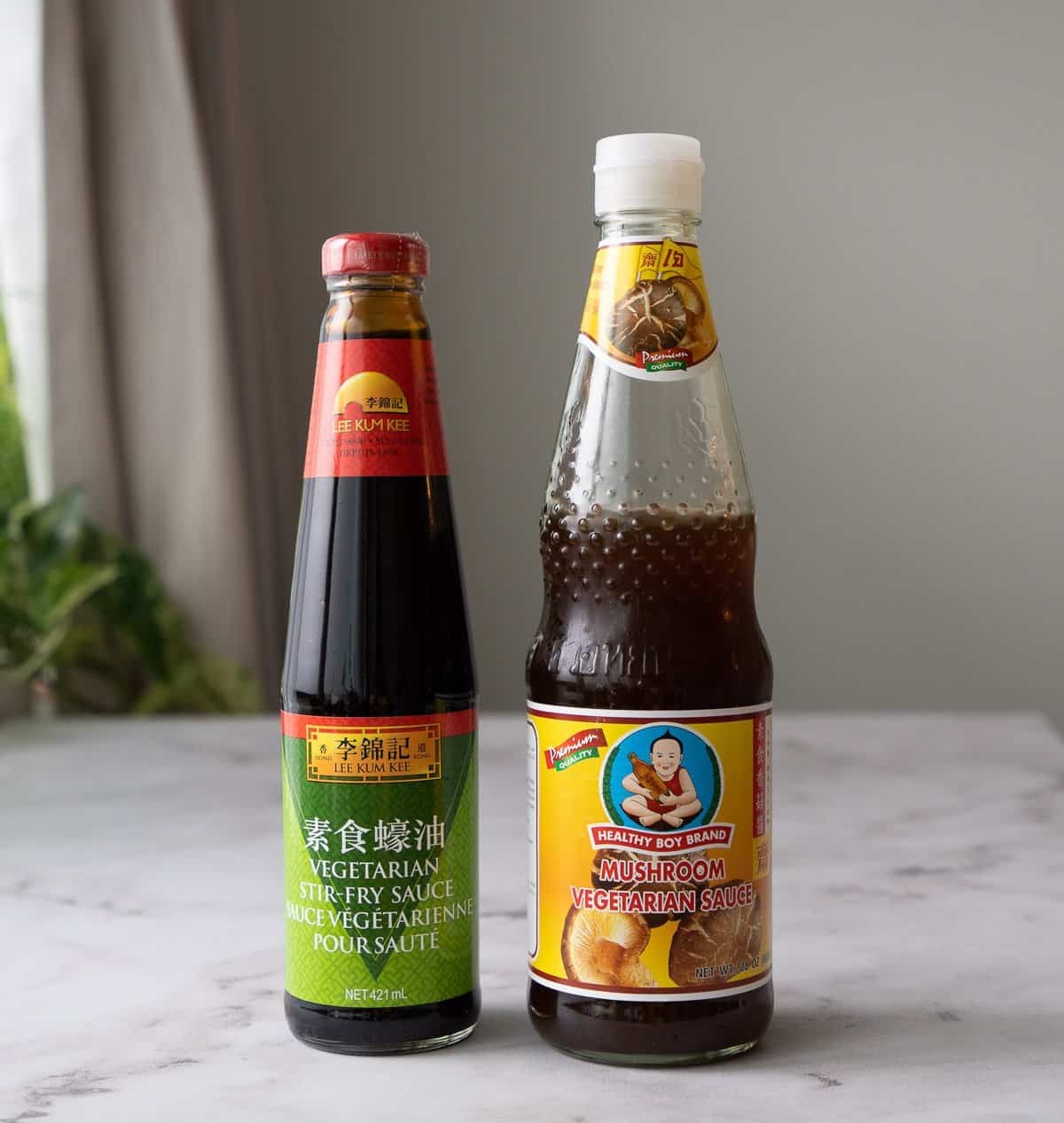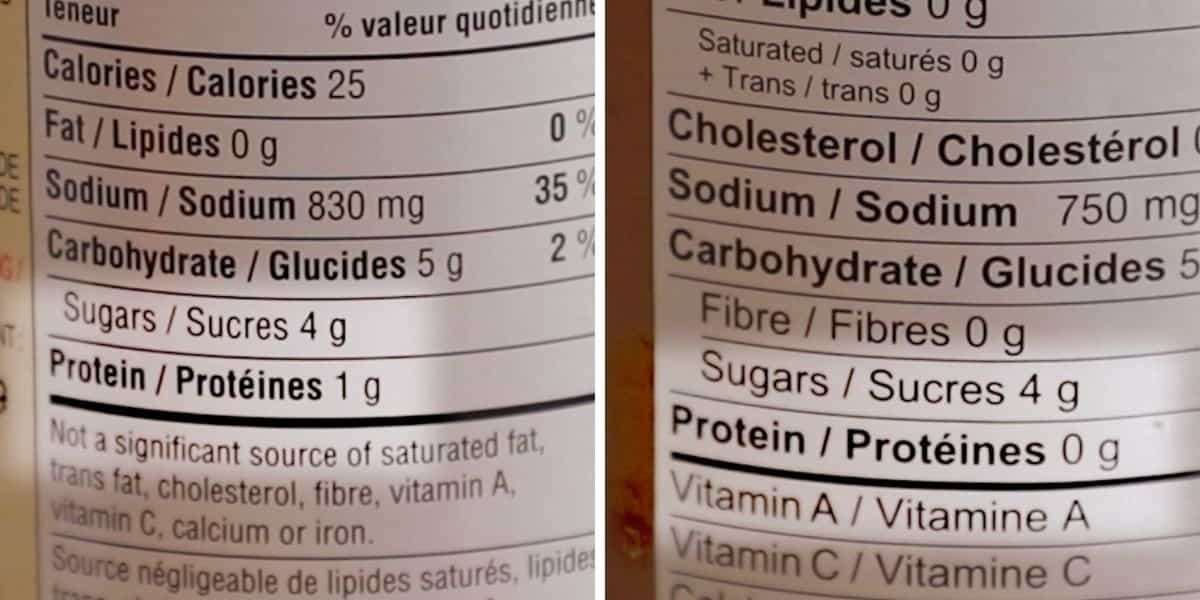Oyster sauce is a staple ingredient in many Asian cuisines, adding a rich, savory depth to stir-fries, marinades, and more. But What Is Oyster Sauce Made Of? At WHAT.EDU.VN, we aim to provide clear, concise answers to all your culinary questions. Discover the primary components, production methods, and best uses of this versatile condiment. We’ll also explore different brands and vegetarian alternatives. Want to know more? Ask your questions for free on WHAT.EDU.VN, your trusted source for information. You’ll find out more about oyster extract, umami flavor, and savory sauces.
1. Understanding Oyster Sauce
1.1 What is Oyster Sauce?
Oyster sauce is a thick, brown sauce that adds a savory and umami flavor to dishes. It is a popular ingredient in Chinese, Thai, and other Asian cuisines. The sauce is primarily used in stir-fries but can also enhance stews, soups, marinades, and even steamed vegetables. Its key characteristics are its rich, salty, and slightly sweet flavor profile.
1.2 The Flavor Profile of Oyster Sauce
Oyster sauce boasts a complex flavor profile that enhances a variety of dishes. Its predominant salty taste is balanced by umami notes, creating a savory depth. A subtle sweetness rounds out the flavor, making it versatile for different culinary applications. Although made from oyster extracts, it doesn’t have an overtly “oyster-like” taste, instead offering a unique and nuanced flavor.
1.3 Oyster Sauce in Asian Cuisine
In Thai cuisine, oyster sauce is a critical component of the “trinity of Thai sauces,” alongside soy sauce and fish sauce. It is used daily in many Thai kitchens, adding depth and richness to a variety of dishes. Similarly, in Chinese cuisine, it serves as a key ingredient in countless recipes, contributing to the distinctive flavors of stir-fries, braised dishes, and more.
2. The Origins and History of Oyster Sauce
2.1 The Chinese Origin Story
Oyster sauce originated in China and has since become a staple in many Southeast Asian countries influenced by Chinese cuisine. The accidental invention of oyster sauce is credited to Lee Kum Sheung, the founder of Lee Kum Kee (LKK), a popular oyster sauce brand, in 1888.
2.2 The Legend of Lee Kum Sheung
The story recounts that Lee Kum Sheung, while cooking oyster soup, inadvertently left the pot simmering for too long. Upon returning, he discovered that the soup had reduced into a thick, rich, brown liquid. Tasting it, he found it incredibly flavorful, marking the beginning of oyster sauce. This anecdote is recounted by Lee Kum Kee themselves, highlighting the serendipitous nature of its creation.
2.3 From Accident to Culinary Staple
What started as a kitchen mishap quickly evolved into a culinary innovation. Lee Kum Sheung recognized the potential of the reduced oyster liquid and began to refine the process. Over time, this accidental discovery was perfected, leading to the commercial production of oyster sauce and its widespread adoption in kitchens around the world.
3. The Making of Oyster Sauce
3.1 Debunking the Myths
Contrary to common assumptions, oyster sauce does not contain pureed or fermented oysters. Instead, it relies on “oyster extracts,” which are derived from cooking oysters.
3.2 The Oyster Extract Process
The production of oyster sauce begins with boiling shucked oysters in large vats. The oysters are then removed, and the remaining briny liquid forms the base of the sauce. This liquid, rich in oyster flavor, is carefully processed to achieve the desired consistency and taste.
3.3 Key Ingredients and Variations
After extracting the oyster essence, the liquid may undergo further reduction. Starch is typically added to thicken the sauce, and other seasonings such as salt, sugar, soy sauce, and MSG are incorporated to enhance flavor. The specific blend of these ingredients can vary significantly between brands, resulting in diverse flavor profiles.
4. Understanding the Key Components of Oyster Sauce
4.1 Oyster Extract: The Heart of the Sauce
Oyster extract is the key ingredient that gives oyster sauce its distinctive flavor. It is produced by simmering oysters in water until the liquids caramelize into a thick, flavorful concentrate. The quality and concentration of the oyster extract greatly influence the final taste of the sauce.
4.2 Sugar: Balancing the Flavors
Sugar is added to balance the saltiness and umami of the oyster extract. The amount of sugar varies among different brands, contributing to the overall sweetness of the sauce. This balance is essential for creating a versatile condiment that complements various dishes.
4.3 Salt: Enhancing the Savory Notes
Salt is a crucial component that enhances the savory notes of the oyster extract. It not only preserves the sauce but also intensifies its flavor, making it a potent seasoning agent. The right amount of salt is vital for achieving the desired taste profile.
4.4 Thickeners: Achieving the Right Consistency
Thickeners such as cornstarch or wheat flour are used to give oyster sauce its characteristic viscous texture. These ingredients ensure that the sauce coats food properly and adds a pleasant mouthfeel. The choice of thickener can also affect the sauce’s gluten content.
4.5 Optional Additives: MSG and Coloring
Some brands may include MSG (monosodium glutamate) to enhance the umami flavor and caramel coloring to achieve a rich, brown hue. These additives are optional and their use depends on the brand’s specific recipe and target market. Consumers sensitive to these ingredients should check the label carefully.
5. Oyster Sauce Brands and Taste Tests
5.1 Popular Brands Compared
Several brands of oyster sauce are available on the market, each with its unique flavor profile and ingredients. Popular brands include Lee Kum Kee (LKK) Premium, Panda Brand (by LKK), Maekrua, and Healthy Boy. Each brand offers a distinct taste experience, making it essential to choose one that suits your culinary preferences.
5.2 Lee Kum Kee Premium (Boat Lady)
Lee Kum Kee Premium, often referred to as the “Boat Lady” brand due to the label design, is the original and premium oyster sauce from LKK. It is known for its rich flavor and high-quality ingredients, making it a favorite among chefs and home cooks alike.
5.3 Panda Brand (by LKK)
Panda Brand, also by Lee Kum Kee, is a more widely available and affordable option. It is commonly used in many Thai and Chinese restaurants. While it may not have the same depth of flavor as the Premium version, it is a reliable and versatile choice for everyday cooking.
5.4 Maekrua
Maekrua is a popular Thai brand of oyster sauce, instantly recognizable by the woman on its label. It is a nostalgic favorite for many Thai people and offers an authentic flavor that is perfect for traditional Thai dishes.
5.5 Healthy Boy
Healthy Boy is renowned for its soy sauces but has expanded its product line to include oyster sauce. It is the least expensive of the four brands and offers a unique flavor profile that may appeal to some palates.
5.6 Megachef
Megachef is a newer Thai brand gaining popularity for its high-quality oyster and fish sauces. Although not widely available, it has received positive reviews and is worth trying if you can find it.
6. Conducting Your Own Taste Test
6.1 Why Taste-Testing Matters
Taste-testing oyster sauces side-by-side can reveal significant differences in flavor and quality. This exercise helps you understand which brands best suit your taste preferences and culinary needs. It is especially useful if you are trying to replicate specific flavors or achieve a certain level of authenticity in your dishes.
6.2 The Importance of Blind Tests
When conducting a taste test, it’s beneficial to perform a blind test to eliminate biases. Label the sauces with numbers or codes and have someone else present them to you. This ensures that your judgment is based solely on the taste and not influenced by brand recognition or preconceived notions.
6.3 Evaluating Straight Up vs. in a Dish
Taste each sauce straight from the bottle to assess its raw flavor profile. Note the saltiness, sweetness, umami, and any other distinct characteristics. Then, try each sauce in a simple stir-fry or marinade to see how it performs when cooked and combined with other ingredients. This dual approach provides a comprehensive evaluation.
7. How to Choose the Best Oyster Sauce
7.1 Price as an Indicator
Generally, price can be a good indicator of quality. More expensive brands often contain a higher concentration of oyster extract and better quality ingredients. However, it’s essential to consider bottle size and compare prices per volume to make an accurate assessment.
7.2 Protein Content as a Guide
The protein content listed on the nutrition label can also suggest the amount of oyster extract in the bottle. Higher protein content typically indicates a greater concentration of oyster extract. Again, pay attention to serving sizes and do the necessary calculations to compare different brands accurately.
7.3 Analyzing the Ingredient List
While the ingredient list can provide valuable information, it’s not always straightforward. The order of ingredients indicates their relative proportion in the sauce, but the concentration and quality of those ingredients can vary. Don’t rely solely on the ingredient list; consider other factors like price and protein content.
7.4 Understanding “Oyster Extract” Variations
The term “oyster extract” can be interpreted differently by various brands. Some may use a more concentrated extract, while others may dilute it. This variation can affect the flavor and overall quality of the sauce, making it essential to consider multiple factors when making your choice.
8. Is Oyster Sauce Gluten-Free?
8.1 The Gluten Factor
Most oyster sauces are not gluten-free. Many brands add wheat flour as a thickener, and some contain soy sauce, which may also include wheat. This can be problematic for individuals with gluten sensitivities or celiac disease.
8.2 Gluten-Free Options
However, there are gluten-free oyster sauce options available. Panda Brand offers a gluten-free version that can be found in some stores, and Megachef, a Thai brand, is also gluten-free. Always check the label to ensure the product meets your dietary needs.
8.3 Checking Labels Carefully
For those with gluten sensitivities, it’s crucial to read the ingredient list and nutrition label carefully. Look for certifications or statements indicating that the product is gluten-free. When in doubt, contact the manufacturer for more information.
9. Using Chinese Oyster Sauce in Thai Food
9.1 Flavor Differences
While Thai and Chinese oyster sauces have distinct flavor profiles when tasted directly, these differences become less noticeable when used in dishes. The sauce’s umami and savory notes blend with other ingredients, creating a harmonious flavor.
9.2 Authenticity Considerations
Using Chinese oyster sauce in Thai food will not significantly compromise the dish’s authenticity. Many Thai restaurants use widely available brands like Panda, which are not specifically Thai. The key is to use the sauce in moderation and balance it with other flavors.
9.3 Personal Preferences
Ultimately, the choice of which oyster sauce to use depends on personal preference. If you have a specific memory of a dish’s flavor from Thailand, using a Thai brand like Maekrua may help you recreate that taste more accurately. However, experimenting with different brands can lead to exciting culinary discoveries.
10. Cooking with Oyster Sauce: Tips and Techniques
10.1 Incorporating Oyster Sauce into Dishes
Oyster sauce is incredibly versatile and can be used in numerous ways to enhance your cooking. It is particularly effective in stir-fries, where it adds depth and richness to vegetables, meats, and noodles. It can also be used in marinades to tenderize and flavor proteins.
10.2 Best Practices for Usage
When using oyster sauce, start with a small amount and adjust to taste. Its concentrated flavor can easily overpower a dish if used excessively. It’s best to add it towards the end of the cooking process to preserve its flavor and prevent it from becoming bitter.
10.3 Recipes that Showcase Oyster Sauce
Many recipes highlight the unique flavor of oyster sauce. Classic Chinese broccoli stir-fry (Gai Lan) is a simple yet delicious dish that showcases its umami notes. Other popular recipes include beef with broccoli, cashew chicken, and various noodle dishes.
11. Storing Oyster Sauce Properly
11.1 Refrigeration Guidelines
Once opened, oyster sauce should be refrigerated to prevent mold growth. While some may keep it at room temperature, especially in regions with frequent use, refrigeration is the safest practice to maintain its quality and prevent spoilage.
11.2 Storage Tips
Ensure the bottle is tightly sealed when stored in the refrigerator. This prevents the sauce from drying out and maintains its flavor. Properly stored oyster sauce can last for several months.
11.3 Shelf Life Considerations
Check the expiration date on the bottle and use the sauce within that timeframe for optimal flavor. While it may still be safe to consume after the expiration date, its quality and taste may diminish over time.
12. Vegetarian Substitutes for Oyster Sauce
12.1 Vegan and Vegetarian Options
For those who are vegan, vegetarian, or allergic to shellfish, there are excellent substitutes for oyster sauce. These alternatives typically use shiitake mushrooms as the source of umami, providing a similar depth of flavor.
12.2 Identifying Substitutes
Look for bottles labeled “vegetarian stir-fry sauce” or “vegetarian mushroom sauce.” These products are designed to mimic the flavor and texture of oyster sauce, making them suitable for a wide range of dishes.
12.3 Popular Brands and Products
Several brands offer vegetarian oyster sauce substitutes, often using mushroom extracts to replicate the umami flavor. These substitutes can be used in the same way as traditional oyster sauce, providing a delicious and ethical alternative.
13. Delicious Recipes Using Oyster Sauce
13.1 Classic Stir-Fry Recipes
Oyster sauce shines in classic stir-fry recipes, adding a savory depth to vegetables, meats, and noodles. Try it in dishes like beef with broccoli, chicken stir-fry, or mixed vegetable stir-fry for a quick and flavorful meal.
13.2 Marinades and Sauces
Use oyster sauce in marinades to tenderize and flavor proteins. It works well with beef, chicken, and pork, adding a rich umami taste. It can also be used as a base for sauces, combined with soy sauce, garlic, and ginger for a versatile condiment.
13.3 Noodle and Rice Dishes
Enhance noodle and rice dishes with a splash of oyster sauce for added flavor. It’s a great addition to dishes like Pad See Ew, fried rice, and lo mein, providing a savory and satisfying taste.
14. Exploring Thai Ingredients 101
14.1 Essential Thai Ingredients
Thai cuisine is known for its complex and harmonious flavors, achieved through a combination of essential ingredients. These include fish sauce, soy sauce, lime juice, chili peppers, and fresh herbs like cilantro and basil.
14.2 Understanding Thai Flavors
The balance of sweet, sour, salty, bitter, and umami flavors is crucial in Thai cooking. Understanding how these flavors interact and complement each other is essential for creating authentic and delicious Thai dishes.
14.3 Incorporating Thai Ingredients
Experiment with different Thai ingredients to expand your culinary repertoire. Use fish sauce as a savory base, lime juice for brightness, and chili peppers for heat. Combine these ingredients with fresh herbs and spices to create authentic Thai flavors.
15. Frequently Asked Questions (FAQs) about Oyster Sauce
| Question | Answer |
|---|---|
| What exactly is oyster sauce? | Oyster sauce is a thick, brown sauce made from oyster extracts, sugar, salt, and other seasonings. It adds a savory and umami flavor to dishes. |
| How is oyster sauce made? | Oyster sauce is made by simmering oysters in water until the liquids caramelize into a thick, flavorful concentrate. This extract is then combined with sugar, salt, and other ingredients. |
| Is oyster sauce vegetarian or vegan? | No, traditional oyster sauce is not vegetarian or vegan as it contains oyster extracts. However, there are vegetarian and vegan substitutes available that use mushroom extracts to replicate the flavor. |
| What does oyster sauce taste like? | Oyster sauce has a complex flavor profile that is primarily salty and umami, with a subtle sweetness. It doesn’t taste strongly of oysters but adds a rich, savory depth to dishes. |
| How should I store oyster sauce? | Once opened, oyster sauce should be refrigerated to prevent mold growth and maintain its quality. Ensure the bottle is tightly sealed when stored. |
| Can I use oyster sauce if I’m allergic to shellfish? | No, if you are allergic to shellfish, you should avoid traditional oyster sauce as it contains oyster extracts. Opt for vegetarian or vegan substitutes made from mushroom extracts. |
| What are some good substitutes for oyster sauce? | Good substitutes for oyster sauce include vegetarian stir-fry sauce, vegetarian mushroom sauce, soy sauce with a touch of sugar, or a combination of soy sauce and hoisin sauce. |
| How can I tell if oyster sauce is high quality? | High-quality oyster sauce typically has a higher price point, higher protein content on the nutrition label, and lists oyster extract as one of the first ingredients. Tasting it can also reveal its rich flavor. |
| Is oyster sauce gluten-free? | Most traditional oyster sauces are not gluten-free as they contain wheat flour as a thickener. However, some brands offer gluten-free versions, so check the label carefully. |
| How long does oyster sauce last? | Properly stored oyster sauce can last for several months in the refrigerator. Check the expiration date on the bottle and use it within that timeframe for optimal flavor. |





16. More Thai Ingredients 101
| Ingredient | Description | Use |
|---|---|---|
| Fish Sauce | A staple condiment made from fermented fish. It has a strong, salty, and umami flavor that adds depth to many Thai dishes. | Used as a base for sauces, marinades, and soups. Adds a savory flavor to stir-fries and salads. |
| Soy Sauce | A versatile sauce made from fermented soybeans. It comes in various types, including light soy sauce, dark soy sauce, and sweet soy sauce, each with its unique flavor profile. | Used as a seasoning, marinade, and dipping sauce. Adds saltiness and umami to dishes. |
| Lime Juice | The juice of fresh limes, which adds a sour and tangy flavor to Thai dishes. It is a key ingredient in many soups, salads, and sauces. | Used to balance flavors and add brightness to dishes. Essential in soups like Tom Yum and salads like Som Tum. |
| Chili Peppers | Various types of chili peppers are used in Thai cuisine, ranging from mild to extremely spicy. They add heat and complexity to dishes. | Used to add heat to curries, soups, stir-fries, and sauces. Available fresh, dried, or as chili paste. |
| Coconut Milk | A creamy liquid extracted from the flesh of coconuts. It is used in many Thai curries, soups, and desserts, adding richness and sweetness. | Used to create creamy and flavorful curries, soups, and desserts. Provides a rich and smooth texture. |
| Galangal | A rhizome similar to ginger, but with a more citrusy and earthy flavor. It is a key ingredient in many Thai curries and soups. | Used to flavor curries, soups, and stir-fries. Adds a unique citrusy and earthy flavor. |
| Lemongrass | A fragrant grass with a citrusy and slightly floral flavor. It is used in many Thai dishes to add aroma and complexity. | Used to flavor soups, curries, and stir-fries. Adds a refreshing and aromatic flavor. |
| Thai Basil | A type of basil with a slightly anise-like flavor. It is used in many Thai dishes, especially curries and stir-fries, adding a fresh and aromatic note. | Used as a garnish and added to curries and stir-fries for its unique flavor. |
| Cilantro (Coriander) | A widely used herb with a fresh and slightly citrusy flavor. It is used as a garnish and added to many Thai dishes to add brightness and aroma. | Used as a garnish and added to soups, salads, and stir-fries for its fresh flavor. |
| Palm Sugar | A natural sweetener made from the sap of palm trees. It has a caramel-like flavor and is used to balance the flavors in many Thai dishes. | Used to sweeten curries, desserts, and sauces. Adds a unique caramel-like flavor. |
17. Call to Action
Are you still curious about what oyster sauce is made of or have other burning questions about Asian cuisine? Don’t hesitate to ask your questions for free at WHAT.EDU.VN! Our community of experts is ready to provide you with fast, accurate, and helpful answers. Whether you’re a student, a professional, or simply a curious individual, WHAT.EDU.VN is your go-to resource for free information. Contact us at 888 Question City Plaza, Seattle, WA 98101, United States, or via Whatsapp at +1 (206) 555-7890. Visit our website at what.edu.vn to submit your questions today!
Alt: Close-up comparison showing the ingredient lists of premium LKK oyster sauce versus basic LKK, highlighting differences in oyster extract content.
Alt: Selection of various oyster sauce brands used in a taste test, including Lee Kum Kee, Panda Brand, Maekrua, and Healthy Boy.
Alt: Illustrative shot displaying the thick consistency of oyster sauce, a result of added starch, with notable variations across different brands.
Alt: Display of vegetarian oyster sauce substitutes, highlighting brands that offer vegan-friendly stir-fry and mushroom sauces.
Alt: Side-by-side comparison of oyster sauce nutrition labels, focusing on protein content as an indicator of oyster extract concentration, highlighting variances.